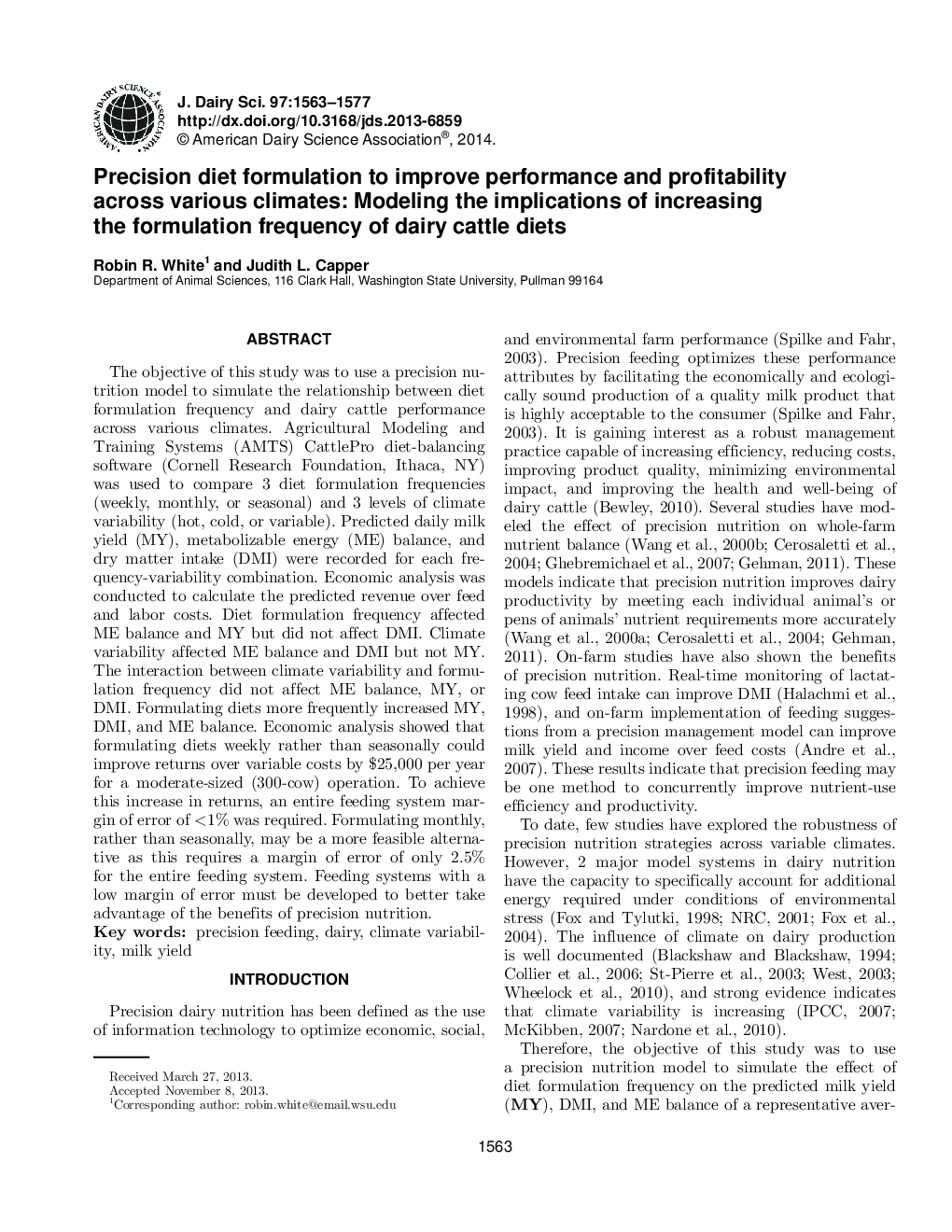| Article ID | Journal | Published Year | Pages | File Type |
|---|---|---|---|---|
| 10975157 | Journal of Dairy Science | 2014 | 15 Pages |
Abstract
The objective of this study was to use a precision nutrition model to simulate the relationship between diet formulation frequency and dairy cattle performance across various climates. Agricultural Modeling and Training Systems (AMTS) CattlePro diet-balancing software (Cornell Research Foundation, Ithaca, NY) was used to compare 3 diet formulation frequencies (weekly, monthly, or seasonal) and 3 levels of climate variability (hot, cold, or variable). Predicted daily milk yield (MY), metabolizable energy (ME) balance, and dry matter intake (DMI) were recorded for each frequency-variability combination. Economic analysis was conducted to calculate the predicted revenue over feed and labor costs. Diet formulation frequency affected ME balance and MY but did not affect DMI. Climate variability affected ME balance and DMI but not MY. The interaction between climate variability and formulation frequency did not affect ME balance, MY, or DMI. Formulating diets more frequently increased MY, DMI, and ME balance. Economic analysis showed that formulating diets weekly rather than seasonally could improve returns over variable costs by $25,000 per year for a moderate-sized (300-cow) operation. To achieve this increase in returns, an entire feeding system margin of error of <1% was required. Formulating monthly, rather than seasonally, may be a more feasible alternative as this requires a margin of error of only 2.5% for the entire feeding system. Feeding systems with a low margin of error must be developed to better take advantage of the benefits of precision nutrition.
Related Topics
Life Sciences
Agricultural and Biological Sciences
Animal Science and Zoology
Authors
Robin R. White, Judith L. Capper,
